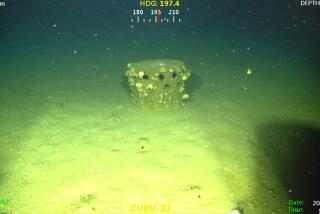Potential Arms Material Missing in Iraq, U.N. Says
- Share via
UNITED NATIONS — U.N. satellite imagery experts have determined that material that could be used to make biological or chemical weapons and banned long-range missiles has been removed from 109 sites in Iraq, weapons inspectors said in a report obtained Thursday.
In the report to the U.N. Security Council, Demetrius Perricos, the world body’s acting chief weapons inspector, said he had reached no conclusions about who had removed the items or where they went.
He said the material could have been moved to elsewhere in Iraq, sold as scrap, melted down or purchased.
The U.N. weapons inspectors commission previously reported the discovery of some equipment and material from the sites in scrap yards in Jordan and the Dutch port of Rotterdam.
Perricos said imagery analysts had identified 109 sites where varying amounts of equipment were removed, up from 90 reported in March.
U.N. inspectors have been blocked from returning to Iraq since the U.S.-led war began in March 2003, so they have been using satellite photos to see what happened to the sites they had once monitored, whose equipment had both civilian and military uses.
The report also provides more detail about the number of items no longer at the places where U.N. inspectors monitored them.
Perricos said analysts had found, for example, that 53 of the 98 vessels that could be used for a wide range of chemical reactions had disappeared.
“Due to its characteristics, this equipment can be used for the production of both commercial chemicals and chemical warfare agents,” he said.
The largest percentage of missing items belonged to 58 missile facilities, which include some of the key production sites for solid and liquid propellant missiles, the report says.
More to Read
Sign up for Essential California
The most important California stories and recommendations in your inbox every morning.
You may occasionally receive promotional content from the Los Angeles Times.










